| |
Western's Kickstarter |
|
| |
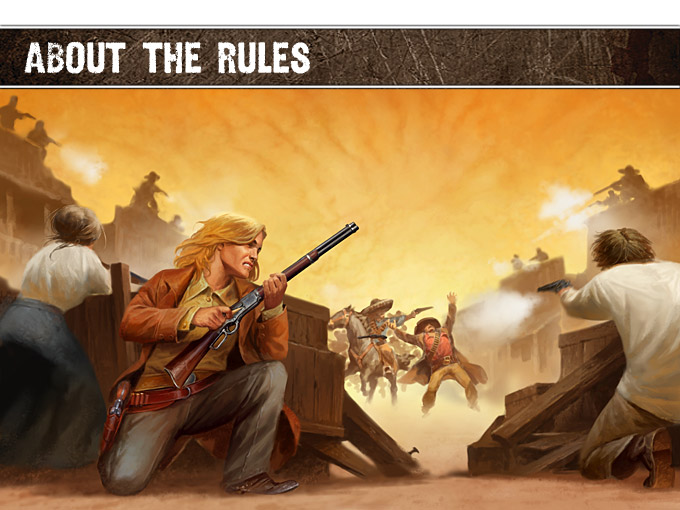 |
|
| |
Western is a giant toolbox for players and game masters alike. There are fast tracks for those who want to go lighter on the rules crunch, but the system still offers a lot of tinkering for those who love micromanaging their characters. The system does not favor one way over the other: it is a matter of personal choice. Still, if you put in the work to fill in the character sheet before you start playing, then players and GMs alike will have easy access to all information they might require, and also can easily make updates based on play.
|
|
| |
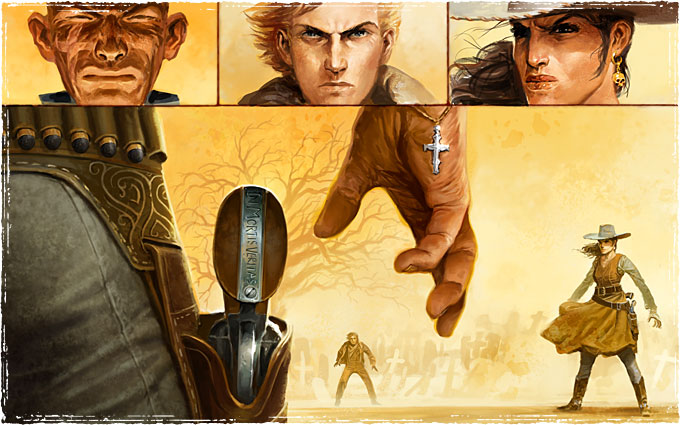 |
|
| |
We offer three styles of play, from the gritty Realism, though a Campaign mode best suited for multi-session play with longer story arcs, all the way to full on – almost over-the-top – action mode. The three levels not only decide how skilled the characters are, but more importantly how harshly the game world will treat them. Do you want a snowstorm to potentially turn into a struggle to reach shelter in time to survive, or are the characters semi-indestrictible superheroes?
At its core, the rule mechanic for most things you do is simple. Roll a d20, add your skill (or attribute) to reach a target number (usually 20). And when it comes to shooting, we use our crosshair on transparent film: the players can place it over different kinds of targets and decide if they try to aim low, at the gun hand, or just straight on. Their skill, luck and the crosshair then decides where they actually hit.
|
|
| |
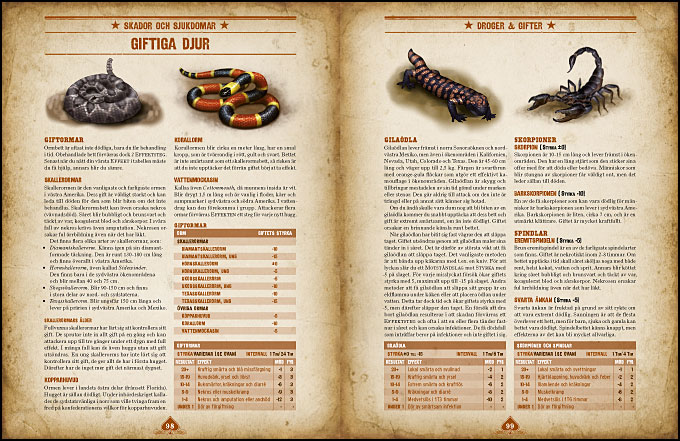 |
|
| |
There are rules for a lot of situations that may come up in play, such ase illness, drugs, and mass battles. In all cases, the same principles drives all rules, making them easy to incorporate when the GM needs them.
|
|
| |
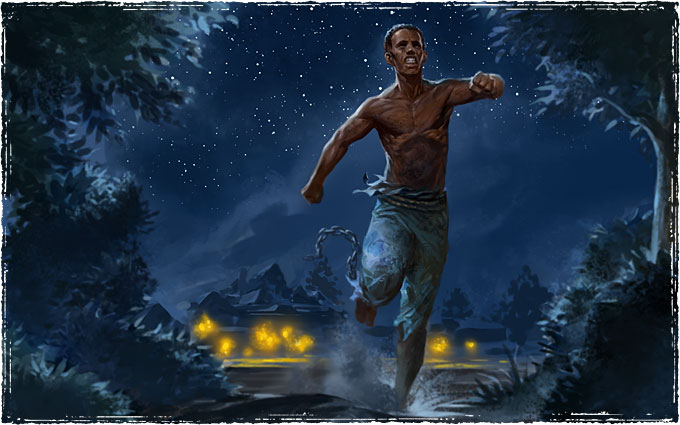 |
|
| |
What really makes the game shine? The focus on the characters. During the character creation process, you immerse the players in setting with the background and life path system, guaranteeing that every character has a truly unique backstory that provides a multitude of adventure hooks. Social and ethnic backgrounds have a profound effect on the life path, although we keep the American Dream alive and let the social mobility be a factor.
|
|
| |
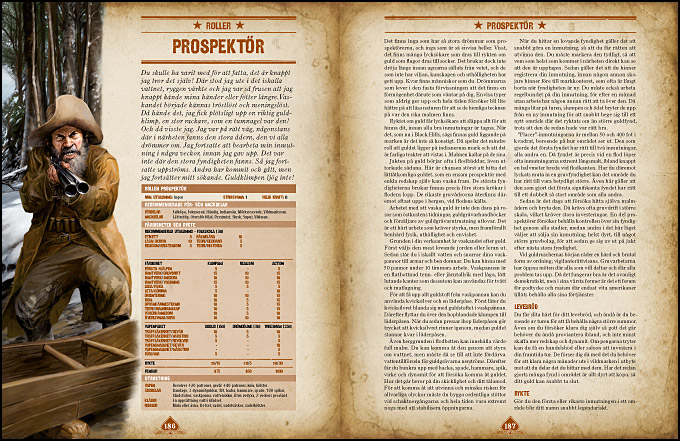 |
|
| |
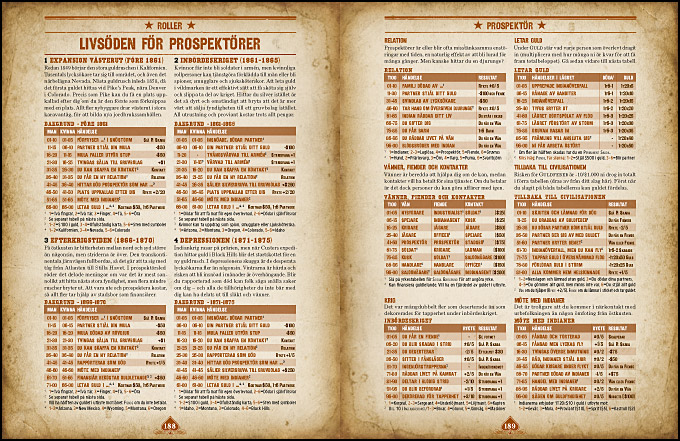
|
|
| |
Finally, each Role (a kind of career template) comes with a life path system of its own, since all characters have encountered four main events that tie in to their career choices. How they handle these situations will provide both the player and the GM with useful ideas on how the character comes into play, possible follow-up scenarios, and so on. For instance, will the Secret Service Agent accept a bribe (and gain more money), or turn it down and make an enemy of the man he just brought to justice?
Each Role is presented on 4 pages. The first page present flavor text, illustration, and game stats for each of the three styles/levels of play. The second page is a description of how this particular Role fits into the campaign setting, typical events that might already have occurred or could happen in the future, what kind of money the character could make, and how they gain Reputation. The second spread is devoted to life path events. You do not have to roll all four of your life path events for the Role you choose. If you have followed different careers in your past, you might want to use up to 3 of your rolls on life path events for other Roles.
|
|
| |
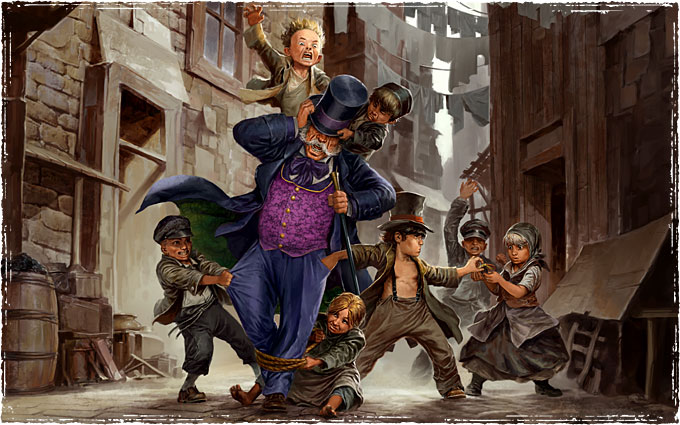 |
|
| |
Feats and Flaws is a self-regulating system, where players decide how much they want their Flaws to come into play. When they do, the player get a special point (or token), that can only be used to activate a Feat. Flaws are usually descriptive and guide role-playing, while Feats often provide a special Bonus to a certain skill roll. We want to encourage players to break the mold when they play Western. Sure, the real Wild West did not have too many kick-ass Chinese or female gunslingers, but players who take on the challenge – and endure some of the hardships that might come with their choice – will receive a bunch of Bonus points to activate their Feats with!
|
|
| |
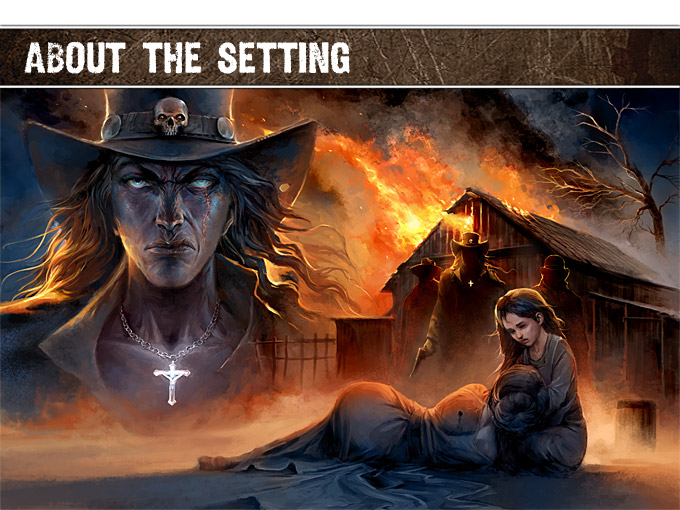 |
|
| |
The default setting, if nothing else is chosen, begins in 1875. That way, ambitious GMs can research freely and find many of the existing intrigues and conflicts we like to draw upon. However – and this is important – it is a game and a game setting. Even if we embellish based on known facts and figures, we will create our version and it will be definitive on matters where historians disagree. No choices we make when describing the game setting can break the actual history, and neither can any actions from the players. When we add historical figures into the mix, they are always available for the players to interact with – in any way they want. They can save Custer on the battlefield of Little Big Horn and watch him go on to become President after Grant, or even kill him before the battle begins. They can make a friend of Edison during a scenario set at the Centennial Exhibition in Philadelphia, or become sworn enemies when he steals an invention they have been working on.
|
|
| |
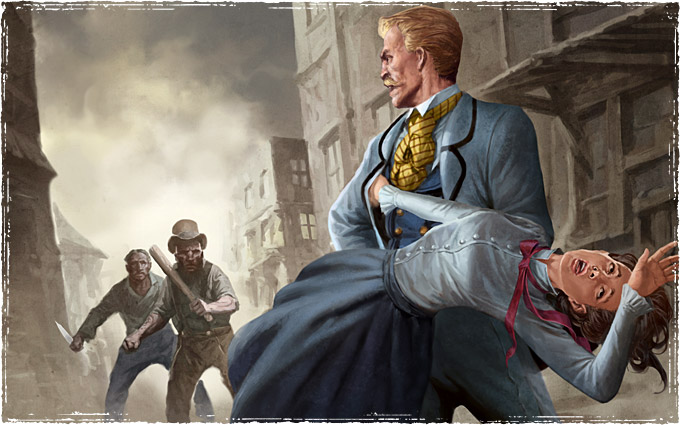 |
|
| |
The dusty city streets out on the Frontier co-exist with a brimming metropolis such as New York. The age of steam has made transportation that much easier, so one month you can be out in the wilderness and find a new boom town in the middle of nowhere, and the next find yourself in a bigger city. And a character who is at home in one place can seldom fit in well in the other. The settlers literally bound to their homesteads coexist with the drifters who travel from one town to the next, searching for marks and easy money.
Since our setting is light on magic and the supernatural, NPCs are all the more important. We always want to bring great supporting cast to a story, to give players more to explore and use. We also want to keep the shades of grey intact. Sure, there are some truly bad people – but they are still people rather than monsters. That leads to slightly different kind of play, at least in our experience. |
|
| |
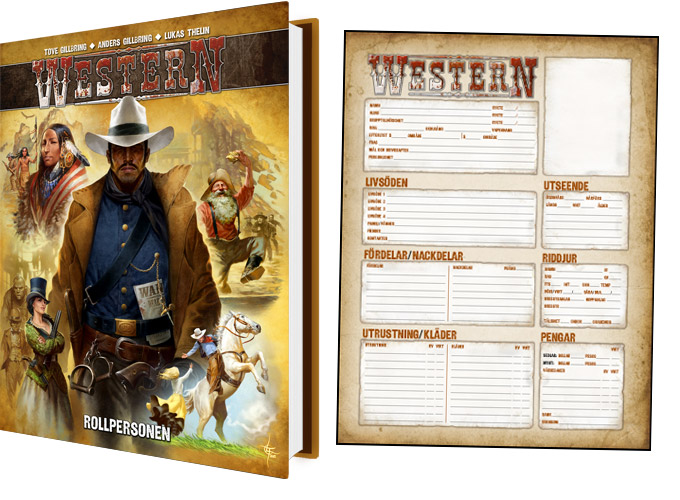 |
|
| |
Your Path – The Player's book
Since every story and adventure in Western begins and ends with the characters, this is the first book. Here you will find tools for fast tracking or delving into detail, all based on your heart’s desire. The system in itself does not reward you for choosing one way to go over the other: it is a truly personal choice where you are never locked in and can borrow a little here and a little there as long as the points total does not exceed the limit. Do you want to spend half an hour and be good to go adventuring during your first Western gaming session, or would you rather spend hours tinkering out all the details you can with a system that will always provide you with both inspiration and the ability to randomize?
In this book, you will get everything from thoughts on finding your role in the group to styles of play, rules for skills and attributes, and equipment. More importantly? Create your character’s background based on ethnicity, where in the world your ancestors hail from, their social standing, your education and your choice of Role (pretty much a career choice, such as Gunslinger, Bounty Hunter, Prospector or Reporter to name but a few of them).
You will also find rules and advice to help you determine everything from gender and sexual orientation to what really drives your characters, as well as Feats and Flaws, skills, how to roll for success in different situations, and how your character can develop over time.
|
|
| |
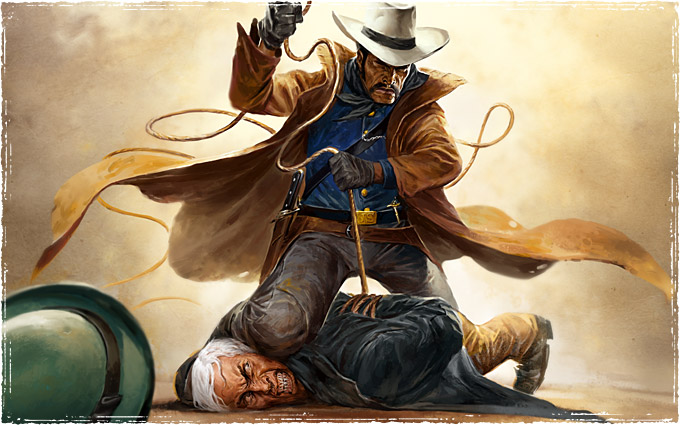 |
|
| |
Each rules section is followed by an example to show how the system works. We have chosen to tell a story through all of these examples where you follow Matthew Douglass, a bounty hunting ex-slave and former Buffalo Soldier sergeant. (His story, and the first scenarios where he showed up, were written long before a certain Django turned up in movies, by the way!)
|
|
| |
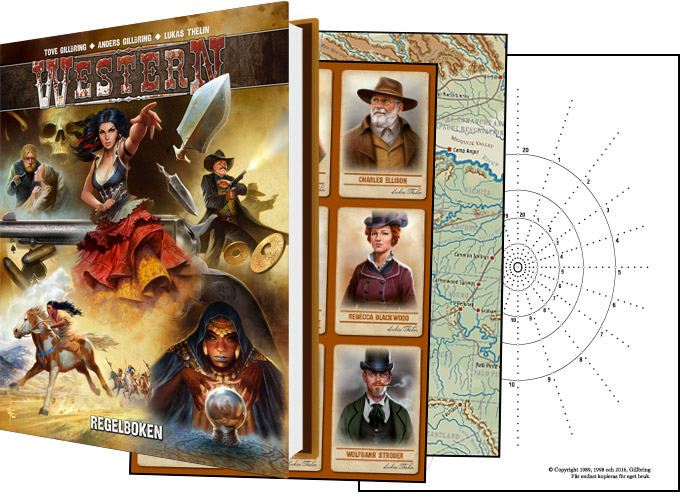 |
|
| |
The Law of the Land – The Game Masters' Book
The second core book dives into the nuts and bolts of the game mechanics. Since it is a Wild West game, shooting is important. We talk about speed as well as accuracy, and some special abilities you can add on as your skill increases. We have also developed a system for brawling, that provides the same visual feel to the play as the crosshair does for shooting. The system also plays out well in a busy fight, where some characters might be brawling and others using firearms at the same time.
But not all fights need an obsessive level of detail – so again, you will find fast-track versions for handling NPCs in the midst of a fight: both the important ones, and those extras who fill out the battlefield. The key for speedy game sessions? A well-prepared GM, using the tools we provide!
There is so much more to the rules than just fighting. When dealing with injuries, for example, you will find help for whenever you wish to use drugs, toxins, or let an epidemic cause problems for the players. And who would not want a bunch of sketchy patent medicines coming their way? Complete with sales texts and ways to tell how different players are affected by them.
More importantly, though? A classic hero has to be able to rely on his guns (so they are covered in detail) and his mount. Every weapon, holster, and mount included in the game is treated with a full-color illustration, description, and game stats.
|
|
| |
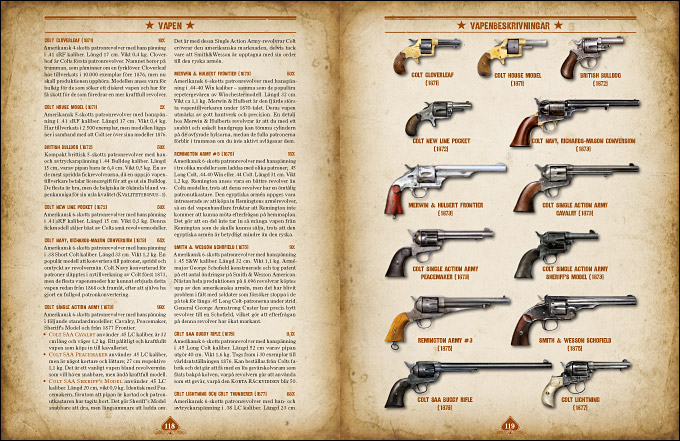 |
|
| |
Horses can be a lot more than a simple means of transport. You can give them traits and personality, train them, and work with them. And maybe more importantly, use them in chases of different kinds. When the posse sets out after the bank robbers, for example, or when the rustlers try to keep ahead of the cowboys.
|
|
| |
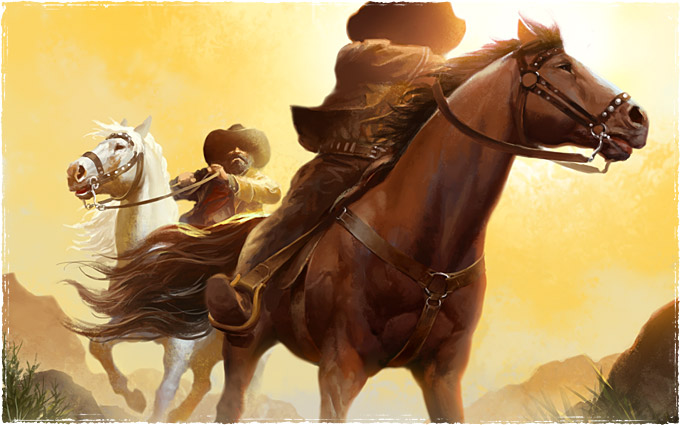 |
|
| |
The same rules system for chases applies when a gang of pickpockets runs through the dark alleys of a city like New York, or for a steamboat race down the Mississippi River, or for the chase through the swamps after characters caught trying to infiltrate a Ku Klux Klan meeting in Lousiana. Did a character jump aboard a moving train while a furious gang of desperados tries to catch up on horseback? Whenever your players launch into any kind of terrain head-first in a high speed chase, this system will work seamlessly with the rest of the game rules, covering things like pausing to take aim at an enemy, and handling how the terrain change during a chase, with its effects on both pursuers and pursued.
|
|
| |
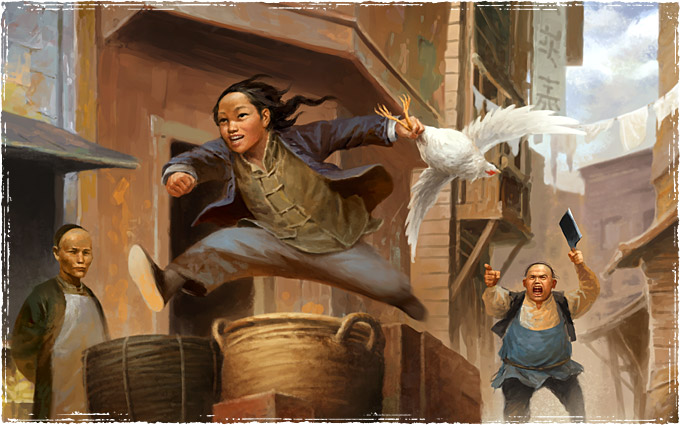 |
|
| |
Everything the characters do in Western will have consequences. The easiest way to show this is through Reputation. Your Honor measure the kind of Reputation you have – positive numbers are good, going all the way up to hero status. Negative numbers, and you are unpopular, even hated. The other part of Reputation is Fame. Do people recognize you? And if so, how will it affect you?
A large part of this book is for GMs, with a multitude of tools to make their work easier. You will find short cuts to help create interesting NPCs in as much or little detail as you need; thoughts on how to create different kinds of campaigns depending on the group’s preferred style of play; campaign seeds; a scenario generator; what to do with all the NPCs the players may generate during character creation; and sheets to keep track of everything from your players to horse races and terrain tiles.
|
|
| |
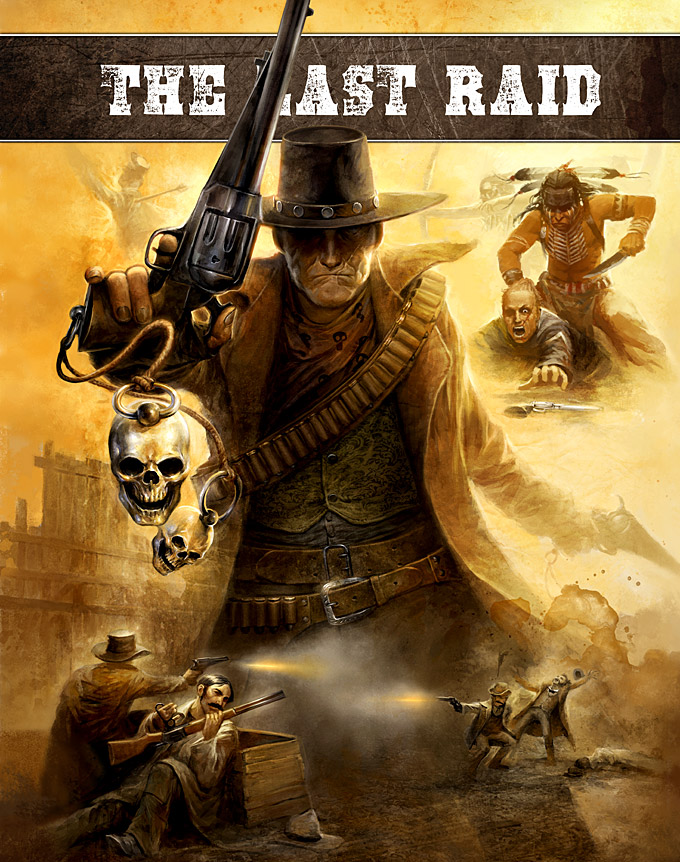 |
|
| |
At the very end of the book, you will find the introductory adventure The Last Raid. Set in Texas, this adventure introduces an old settlement that is suddenly booming - but farms and ranches are being attacked. Players will encounter Comanche warriors, the U.S. Cavalry, and a lot more.
|
|
| |
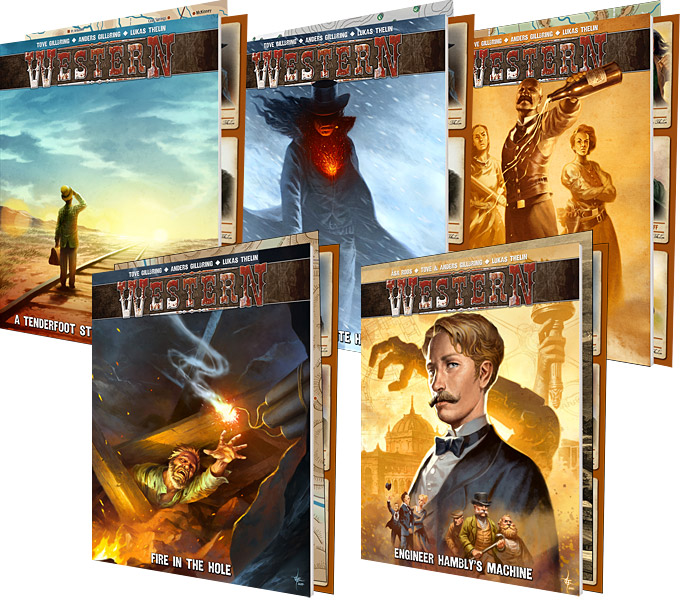 |
|
| |
Adventures
We always structure our adventures for you to scavenge what you want from them. If you take the whole package, you get a complete adventure with handouts and everything. But you can opt for just parts, like places, NPCs, maps, parts of stories, or whatever else takes your fancy. Every adventure follows this structure:
- Introduction
- Background
- Agendas for all major characters
- Scenes and Events
- Geographical overview – Map and description
- Cities, towns, settlements, etc., of special interest in the scenario – with a map and description of some of the different locations of interest
- Places of interest – map and description
- Important NPCs – each with illustration, description, and game stats
- Minor NPCs – short description and game stats
- Handouts – Maps, Character Cards, Leads and other Info Cards, etc.
We strive towards an open structure where players’ choices have an impact on how the adventure unfolds. Still, to make the stories work, there are often some scenes and events that must take place in a specific order.
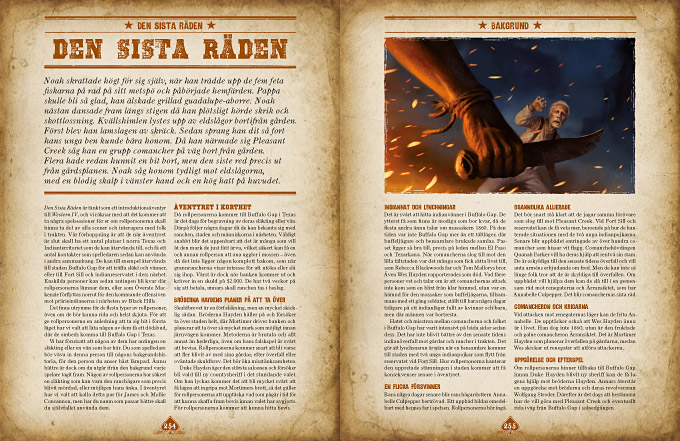
|
|
| |
|
|
| |
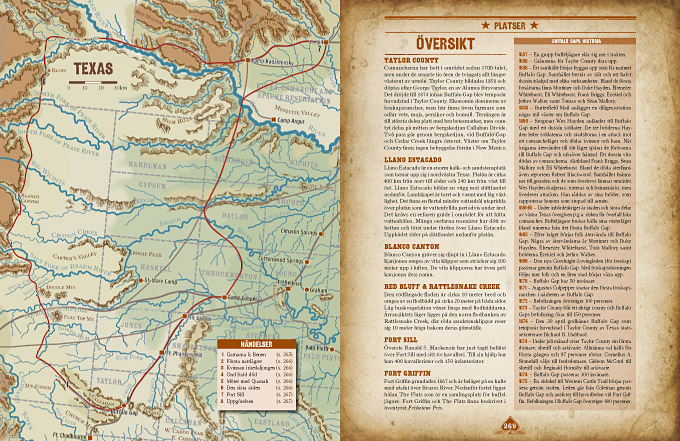 |
|
| |
|
|
| |
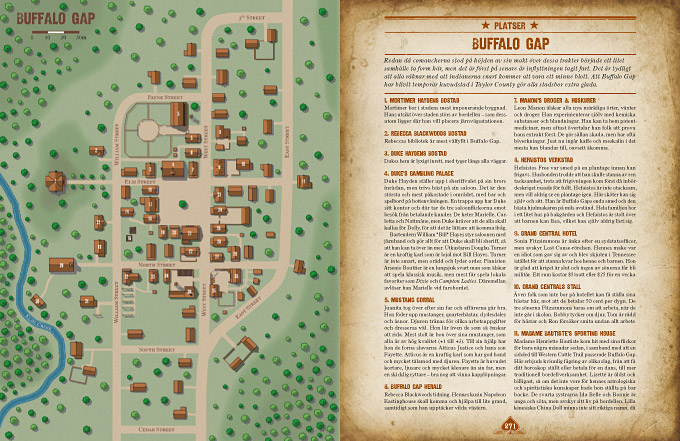 |
|
| |
|
|
| |
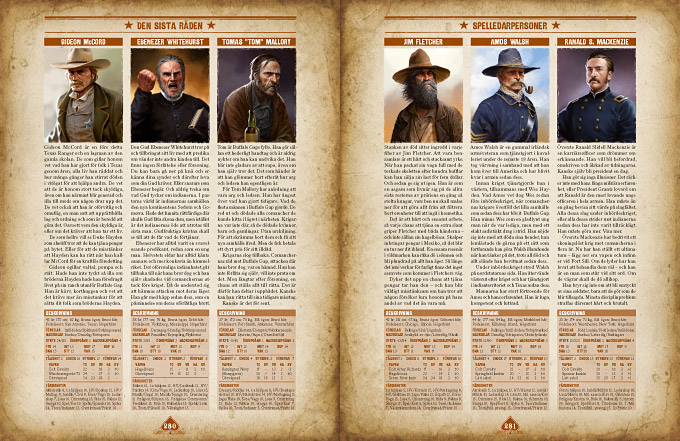 |
|
| |
|
|
| |
Apart from regular adventures for any set of characters, Western also has many convention scenarios with pre-generated characters, which are especially easy to pick up and play.
Each pre-generated character is printed separately, and comes with an illustration, stats, background, personality, and notes in relationships with the other characters. |
|
| |
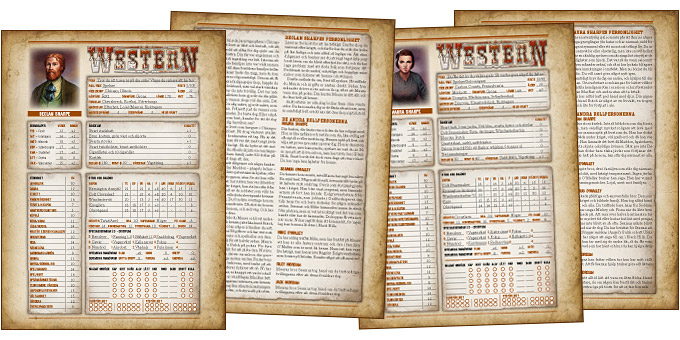 |
|
| |
|
|
| |
All adventures come with handouts such as maps, NPC Cards, Leads and other Info Cards, Letters, Pinkerton Cards, etc. |
|
| |
|
|
| |
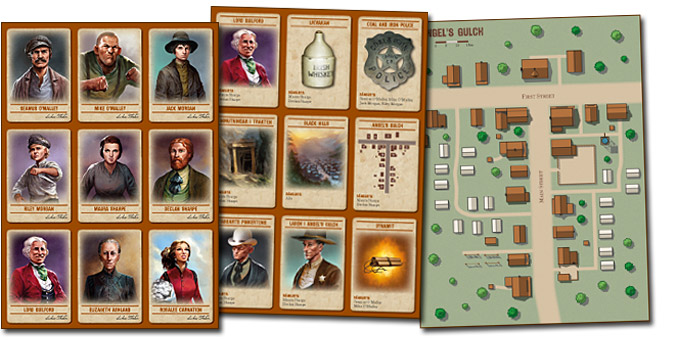 |
|
|